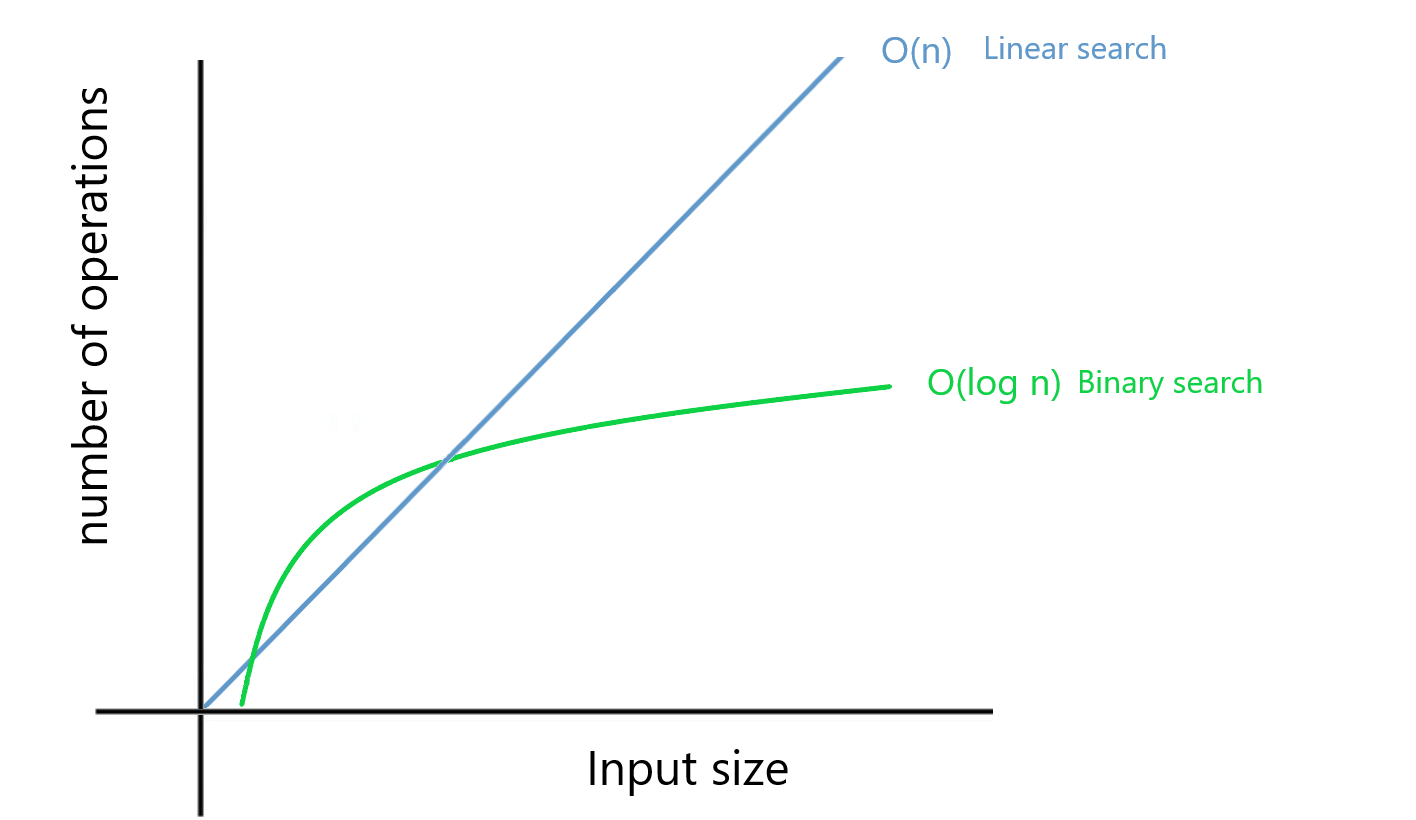Linear Search and Binary Search
Data Structures and Algorithms in Python

Miriam Antona
Software engineer
Searching algorithms
- Searching is an essential operation
- Several ways
- Algorithms that search for an element within a collection:
- Linear search
- Binary search
Linear search
- Looping through each element

- Element found
- algorithm stops
- returns the result
- Element not found
- algorithm continues
Linear search
def linear_search(unordered_list, search_value):for index in range(len(unordered_list)):if unordered_list[index] == search_value:return Truereturn False
print(linear_search([15,2,21,3,12,7,8], 8))
True
print(linear_search([15,2,21,3,12,7,8], 800))
False
Linear search - complexity
- Complexity: $O(n)$
Binary search
- Only applies to ordered lists

- 15 ???
Binary search
- Only applies to ordered lists

- 15 ???
def binary_search(ordered_list, search_value):
first = 0
Binary search
- Only applies to ordered lists

- 15 ???
def binary_search(ordered_list, search_value): first = 0 last = len(ordered_list) - 1while first <= last:
Binary search
- Only applies to ordered lists

- 15 ???
def binary_search(ordered_list, search_value):
first = 0
last = len(ordered_list) - 1
while first <= last:
middle = (first + last)//2
Binary search
- Only applies to ordered lists

- 15 ???
- Compare
search_valuewith the item in the middle of the list
def binary_search(ordered_list, search_value): first = 0 last = len(ordered_list) - 1 while first <= last: middle = (first + last)//2if search_value == ordered_list[middle]:return Trueelif search_value < ordered_list[middle]:
Binary search
- Only applies to ordered lists

- 15 ???
- Compare
search_valuewith the item in the middle of the list
def binary_search(ordered_list, search_value):
first = 0
last = len(ordered_list) - 1
while first <= last:
middle = (first + last)//2
if search_value == ordered_list[middle]:
return True
elif search_value < ordered_list[middle]:
last = middle - 1
Binary search
- Only applies to ordered lists

- 15 ???
- Compare
search_valuewith the item in the middle of the list
def binary_search(ordered_list, search_value):
first = 0
last = len(ordered_list) - 1
while first <= last:
middle = (first + last)//2
if search_value == ordered_list[middle]:
return True
elif search_value < ordered_list[middle]:
last = middle - 1
else:
Binary search
- Only applies to ordered lists

- 15 ???
- Compare
search_valuewith the item in the middle of the list
def binary_search(ordered_list, search_value):
first = 0
last = len(ordered_list) - 1
while first <= last:
middle = (first + last)//2
if search_value == ordered_list[middle]:
return True
elif search_value < ordered_list[middle]:
last = middle - 1
else:
first = middle + 1
Binary search
- Only applies to ordered lists

- 15 ???
- Compare
search_valuewith the item in the middle of the list
def binary_search(ordered_list, search_value):
first = 0
last = len(ordered_list) - 1
while first <= last:
middle = (first + last)//2
if search_value == ordered_list[middle]:
return True
elif search_value < ordered_list[middle]:
last = middle - 1
else:
first = middle + 1
Binary search
- Only applies to ordered lists

- 15 ???
- Compare
search_valuewith the item in the middle of the list
def binary_search(ordered_list, search_value):
first = 0
last = len(ordered_list) - 1
while first <= last:
middle = (first + last)//2
if search_value == ordered_list[middle]:
return True
elif search_value < ordered_list[middle]:
last = middle - 1
else:
first = middle + 1
Binary search
- Only applies to ordered lists

- 15 ???
- Compare
search_valuewith the item in the middle of the list
def binary_search(ordered_list, search_value):
first = 0
last = len(ordered_list) - 1
while first <= last:
middle = (first + last)//2
if search_value == ordered_list[middle]:
return True
elif search_value < ordered_list[middle]:
last = middle - 1
else:
first = middle + 1
Binary search
- Only applies to ordered lists

- 15 ???
- Compare
search_valuewith the item in the middle of the list
def binary_search(ordered_list, search_value):
first = 0
last = len(ordered_list) - 1
while first <= last:
middle = (first + last)//2
if search_value == ordered_list[middle]:
return True
elif search_value < ordered_list[middle]:
last = middle - 1
else:
first = middle + 1
Binary search
- Only applies to ordered lists

- 15 ???
- Compare
search_valuewith the item in the middle of the list
def binary_search(ordered_list, search_value):
first = 0
last = len(ordered_list) - 1
while first <= last:
middle = (first + last)//2
if search_value == ordered_list[middle]:
return True
elif search_value < ordered_list[middle]:
last = middle - 1
else:
first = middle + 1
Binary search
- Only applies to ordered lists

- 15 ???
- Compare
search_valuewith the item in the middle of the list
def binary_search(ordered_list, search_value): first = 0 last = len(ordered_list) - 1 while first <= last: middle = (first + last)//2 if search_value == ordered_list[middle]: return True elif search_value < ordered_list[middle]: last = middle - 1 else: first = middle + 1return False
Binary search - complexity
- Complexity: $O(\log{}n)$

Let's practice!
Data Structures and Algorithms in Python

